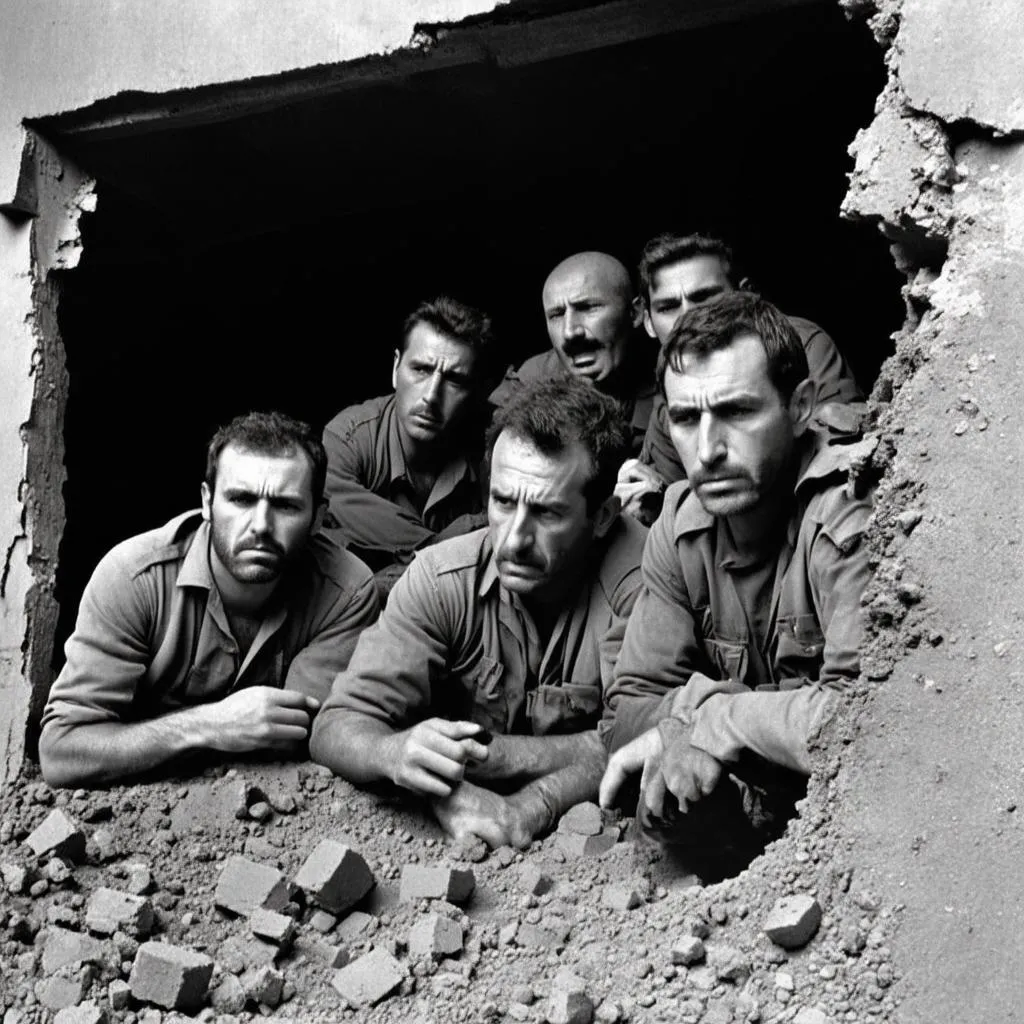“Have you ever walked through a battlefield, the air thick with the echoes of the past?” This was the question posed to me by a fellow traveler, an elderly gentleman named Enzo, during my first trip to Italy. His words ignited a fascination in me, a desire to connect with history in a tangible way. That’s how my journey through Italy’s World War II sites began.
Italy, with its beautiful landscapes and rich culture, might not be the first place that comes to mind when you think of World War II. However, the country played a pivotal role in the conflict, bearing witness to major battles and campaigns. Today, remnants of this tumultuous period remain scattered across its landscape, offering a poignant glimpse into the past and serving as powerful reminders of the human cost of war.
Unveiling the Past: Key WWII Sites in Italy
From the beaches of Sicily to the mountains of the north, Italy offers a diverse range of World War II sites, each with its own story to tell.
1. Anzio and the Beaches of Operation Shingle
The beaches of Anzio, located south of Rome, were the landing site for the Allied forces during Operation Shingle in 1944. The operation aimed to outflank German forces, but it evolved into a long and costly battle. Today, the Anzio Beachhead War Cemetery, resting peacefully by the sea, serves as the final resting place for over 2,800 Allied soldiers. The nearby Beachhead Museum houses a collection of artifacts and personal accounts, offering a deeper understanding of the sacrifices made on these shores.
2. The Gothic Line: Echoes in the Apennines
The Gothic Line was a German defensive line that stretched across the Apennine Mountains, marking a brutal chapter in the Italian Campaign. Visiting the Gothic Line Museum in Scarperia, you can explore bunkers, trenches, and weapons, gaining a visceral sense of the harsh realities faced by soldiers on both sides. The surrounding mountains, still scarred by battle, stand as silent witnesses to the fierce fighting that took place.
3. Monte Cassino: A Monastery Rebuilt
The Battle of Monte Cassino, fought over the historic Benedictine monastery perched atop a hill, was one of the longest and bloodiest battles of the Italian Campaign. The monastery, destroyed and rebuilt several times, now stands as a symbol of resilience and hope. Visitors can explore the Monte Cassino War Cemetery, pay their respects at the Polish, British, and Italian memorials, and reflect on the devastating impact of war.
 Monte Cassino
Monte Cassino
4. Florence: Scars of War and Liberation
Florence, the birthplace of the Renaissance, also bears the marks of World War II. While the city was spared from major destruction, the retreating German forces destroyed all the bridges except for the Ponte Vecchio, leaving a visible reminder of the conflict. Today, walking across the Ponte Vecchio, you can almost hear the echoes of both wartime and liberation.
5. Northward Bound: The Italian Resistance
The northern regions of Italy, particularly Emilia-Romagna, were strongholds of the Italian resistance movement. In cities like Bologna and Parma, you can find museums and memorials dedicated to the partisans who fought bravely against fascism.
 Italian Resistance
Italian Resistance
Planning Your WWII History Tour in Italy
Getting There: Italy is well-connected by air and train, making it easy to travel between different sites.
When to Go: Spring and fall offer pleasant weather for exploring historical sites.
Guided Tours: Consider joining a guided tour led by historians specializing in World War II. These tours provide valuable insights and context, enriching your experience.
Resources: The Italian Tourist Board website and the American Battle Monuments Commission website offer helpful information on planning your trip.
Frequently Asked Questions
Q: Are these sites suitable for families with children?
A: While some sites, like the cemeteries, may be emotionally challenging for young children, others, such as museums and outdoor battlefields, can provide educational opportunities for all ages.
Q: Can I visit these sites independently, or is a tour guide recommended?
A: You can visit many sites independently, but a guided tour can enhance your understanding and provide valuable insights.
Q: What should I pack for visiting World War II sites in Italy?
A: Comfortable walking shoes are essential, as you’ll be doing a lot of walking. Pack for all types of weather, including rain gear and layers.
Travelcar.edu.vn: Your Gateway to Historical Exploration
At travelcar.edu.vn, we understand the allure of historical travel. Our website offers a wealth of information on traveling to Italy, including tips on planning your itinerary, finding accommodation, and immersing yourself in the local culture. For more travel inspiration, check out our articles on what to bring when traveling to Italy and how much to travel to Italy for 2 weeks.
Conclusion: A Journey of Remembrance
Traveling to World War II sites in Italy is a poignant journey through history, offering a glimpse into a turbulent past and reminding us of the importance of peace and remembrance. As you stand before these remnants of war, you can almost hear the echoes of the past, urging us to learn from history and strive for a brighter future.